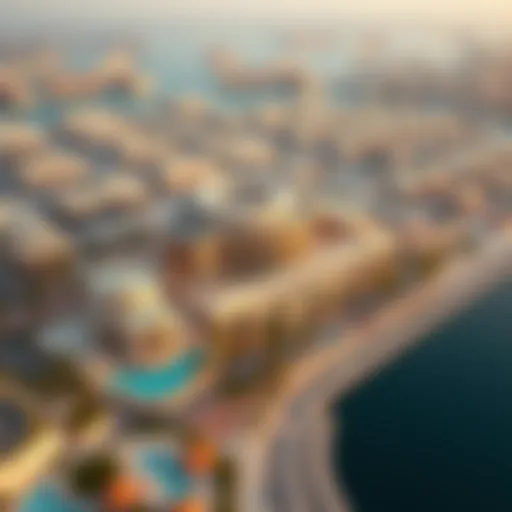Exploring the Metro Route: BurJuman to Stadium Link
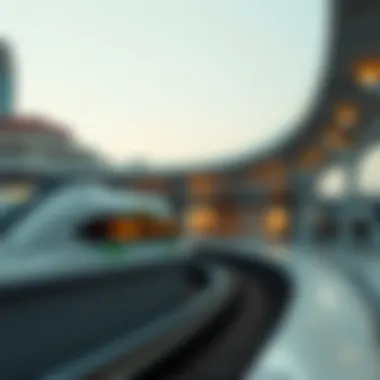
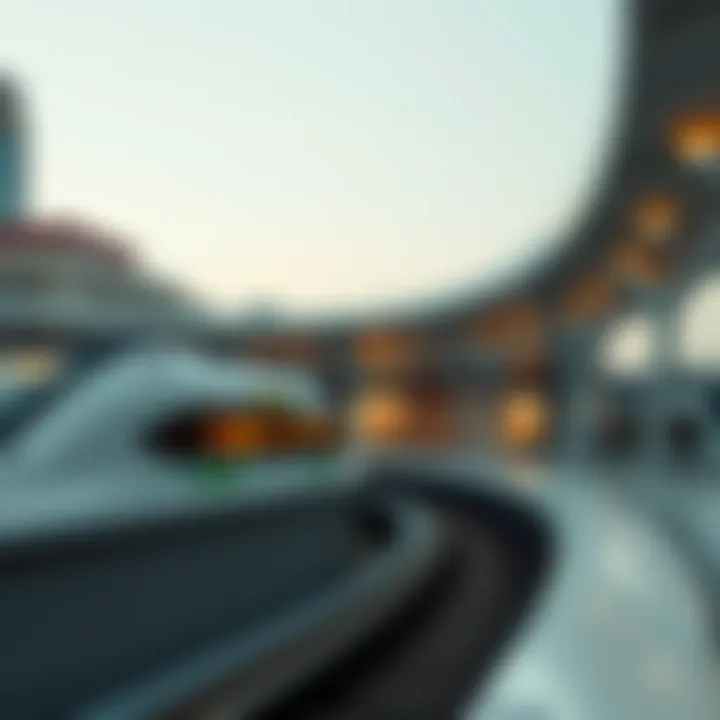
Intro
Navigating Dubai's Metro system might seem like a maze to some, but between BurJuman and Stadium stations lies not just a transit path but a journey that reveals much about the city itself. This article will guide you through the connections, travel dynamics, and the broader significance of this particular route. It's not just about hopping on a train; it's about understanding the intricate relationship between transportation and urban development in Dubai.
The Significance of the Route
The line connecting BurJuman to Stadium is part of a larger metro network that has revolutionized how residents and tourists traverse this bustling city. BurJuman serves as a pivotal hub, connecting several key lines, while Stadium station caters to sports enthusiasts and event-goers. This synergy not only enhances accessibility but also illustrates the strategic significance of public transport in shaping urban life.
In this guide, we will explore the practical travel insights, user experiences, market dynamics, and more. Whether you are a daily commuter, a homeowner, or an investor, there is a wealth of information to uncover about how the metro impacts property investment and urban development. Let's dive in!
Prologue to Dubai's Metro System
Dubai's Metro system stands as a testament to the city’s ambition and innovation in urban development. Connecting major hubs like Burjuman and Stadium, it isn't simply a public transport network; it is the backbone facilitating the daily movement of residents and tourists alike, enhancing both efficiency and convenience. In this fast-paced city, where time is often of the essence, the Metro system shines as a lifeline, essentially eliminating the woes of traffic congestion that plague the roads.
Most notably, the Metro system is not just about getting from point A to B. It provides a significant boost to the local economy. By incorporating this transport system into the urban landscape, Dubai has witnessed a surge in property values along its corridors. Investors and homeowners now regard proximity to Metro stations as a key selling point, which is pivotal for anyone considering the real estate market in Dubai.
As we journey through this article, we'll explore the intricate dynamics between Burjuman and Stadium Metro stations, providing practical travel insights. These insights don't merely enhance user experience but also highlight how transport connects with factors such as real estate, community development, and urban planning. This interconnectedness holds valuable lessons for stakeholders, including investors, homeowners, agents, and developers.
Overview of the Metro Network
Dubai's Metro Network is a marvel of modern engineering, with its extensive lines stretching over 75 kilometers. It consists of two main lines: the Red Line and the Green Line, linking various districts and key locations across the city. Within this comprehensive system, Burjuman serves as a critical interchange, connecting the two lines seamlessly. The network is designed for efficiency, operating consistently with high frequency during peak times to make commuting smooth for everyone. The design also reflects a commitment to sustainability, using advanced technology to cut down on energy consumption.
The infrastructure is complemented by modern stations equipped with user-friendly amenities. Platforms are spacious, ensuring commuters have a comfortable experience while waiting for their trains. Each station is crafted with both functionality and aesthetics in mind, often showcasing artworks that reflect Dubai’s rich culture.
Importance of Efficient Transport
In a cosmopolitan city like Dubai, efficient transport plays a crucial role. It directly impacts daily life, commuting times, and even the economic landscape. Efficient transport is akin to blood flow in a body; without it, everything else tends to stagnate.
- Time-saving: Quick transit reduces commuting times, allowing professionals more time to dedicate to work or leisure.
- Enhanced productivity: Efficient travel options lead to increased workforce efficiency, as individuals can arrive at their destinations on time without the stress of traffic.
- Environmental benefit: Reducing the number of cars on the road mitigates pollution and fosters a cleaner city atmosphere.
In summary, the Metro isn’t merely a means of transport; it’s an essential framework that supports Dubai’s rapid growth and development. With its significant role in urban connectivity, it stands as a model of how public transport can transform the urban experience for residents and visitors alike.
Understanding Burjuman Station
Burjuman Station holds a significant position in Dubai's Metro network. As a pivotal interchange, it links different lines and facilitates seamless travel across the city. Being centrally located in the bustling area of Bur Dubai, this station is not just a hub for commuters but also a gateway to various attractions and services. Its importance cannot be overstated when considering how it connects locals and visitors to the heart of the city.
Location and Accessibility
Situated in a bustling commercial district, Burjuman Station enjoys an enviable location. It’s nestled right at the intersection of two major metro lines—the Red and Green lines. This positioning ensures that travelers can easily switch lines without any hassle.
Accessibility is a key feature of this station. It’s not just the direct metro link that benefits commuters, but also the proximity to various bus routes and taxis. This means, folks can hop from the metro and quickly grab a ride to their final destination. Whether you are headed to the historic Al Fahidi District or the vibrant shopping at Burjuman Mall, convenience is the name of the game here.
Facilities and Services Offered
Burjuman Station is replete with facilities that cater to the needs of its diverse users. From well-maintained waiting areas to digital displays that keep passengers informed about train schedules, everything is designed for maximum convenience.
Additionally, there are multiple services available:
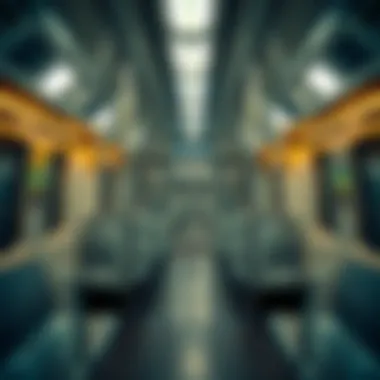
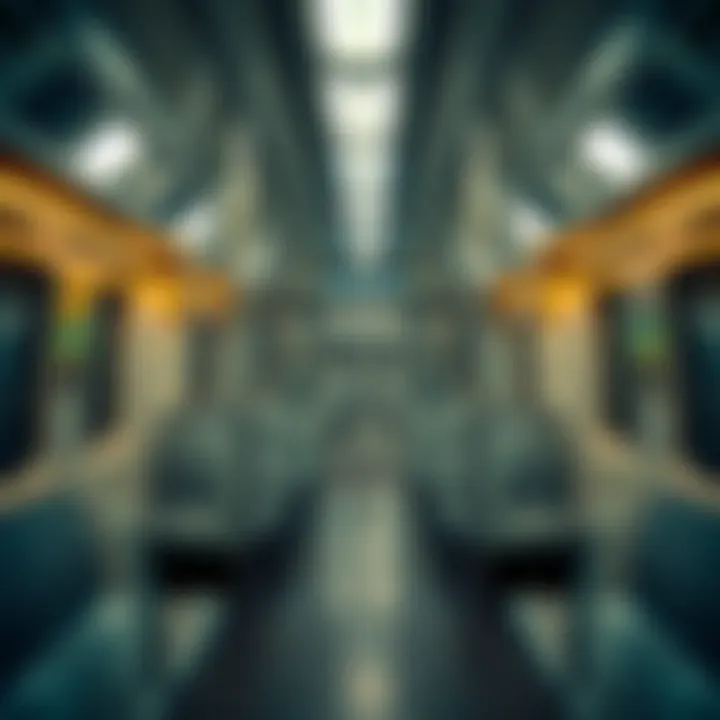
- Information counters where passengers can ask questions or seek assistance.
- Retail shops and snack kiosks that offer quick bites or essential items.
- Restrooms are also easily accessible, making travel that much more comfortable.
These facilities play a significant role in making the daily commute smoother and ensuring that passengers feel welcomed and well-cared-for.
Surrounding Real Estate Developments
The area surrounding Burjuman Station has seen considerable growth in terms of real estate development. With the metro station attracting a large influx of people, it has become a hotspot for various residential and commercial projects. New apartments, luxury hotels, and vibrant retail spaces are sprouting up like weeds, enticing investors and homeowners alike.
The real estate boom in this region is largely attributable to its strategic location. As more developments complete, property values have started to shoot up, making the area one of the most sought-after in Dubai. Whether you're an investor looking to capitalize on the growing demand or a homebuyer seeking a strategic base, Burjuman’s surrounding real estate is worth keeping an eye on.
"Connectivity drives property value; you can bet on this truth in Dubai’s ever-evolving landscape."
Thus, understanding Burjuman Station is key not just for navigating the metro, but also for grasping the larger trends affecting real estate investment in the area.
Exploring the Route to Stadium Station
The route from BurJuman to Stadium Station is more than just a segment of Dubai’s mighty metro. It acts as a vital artery, connecting different neighborhoods, business districts, and, crucially, attractions that draw in residents and tourists alike. Understanding this route can open up a wealth of information, both for everyday commuters and investors keen on the property market.
Travel Duration and Frequency
When it comes to commuting, time is of the essence. The travel duration between BurJuman and Stadium Station is quick, usually clocking in at around 18 minutes. This swift transit reflects the metro system’s efficiency, making it an easy choice for those who need to dash to meetings or possibly catch a game at Stadium Station. It's worth noting that trains run with impressive frequency, generally every 5 to 10 minutes during peak hours, ensuring you won’t be standing around twiddling your thumbs for long.
Stations Along the Route
On your journey, you will encounter several stations that illustrate the vibrant character of Dubai. Here’s a quick rundown of the key stops:
- Al Fahidi Station: This station is a nod to the city’s rich history. Nearby, you can explore traditional markets and historic sites, offering a glimpse into Dubai's past.
- BurJuman Station: As your starting point, BurJuman is itself a busy hub that connects both the Red and Green Metro lines, providing access to various areas of the city.
- Stadium Station: Your destination is close to a range of sporting events and entertainment venues. It’s a heart-thumping area that’s buzzing during large events.
These stations encapsulate the dynamic lifestyle of the city, showcasing its blend of modernity and tradition.
Connecting Transportation Options
Once you reach Stadium Station, you’re not just at a stop; you’re at a launchpad for countless adventures. Here, various transport modes await:
- Buses: The surrounding bus network is convenient, offering routes to nearby areas.
- Taxis: Always available outside the metro, taxis provide an easy way to reach your precise destination.
- Ride-Sharing Services: Platforms like Uber and Careem are active throughout Dubai, making it easy to order a ride just a click away.
- Bicycle Rentals: With an increasing emphasis on eco-friendly transport, some stations have bicycle rentals, further extending your travel options.
These choices ensure that once you hop off the metro, the city continues unfolding in every direction.
"Navigating the metro is just the beginning of your Dubai experience, as each station opens the gateway to unique adventures and opportunities."
Stadium Station Uncovered
Stadium Station serves as a pivotal node in Dubai’s metro system, offering not just transportation but also an array of benefits that enhance the overall commuter experience. Its strategic position connects several important districts, making it a key player in easing access to sports venues, entertainment hubs, and commercial areas. As such, this station is not merely a stop along the line; it embodies the essence of urban mobility in a bustling metropolis.
Station Features and Layout
Stadium Station is well-designed to accommodate a high volume of commuters. The station boasts modern amenities and spacious platforms, which facilitate smooth boarding and alighting. The layout is intuitive, guiding passengers effortlessly from entry points to the train platforms. Notable features include:
- Wide Walkways: To prevent congestion, walkways are generously spaced, allowing smooth flow even during peak hours.
- Accessibility Options: Elevators and escalators are positioned prominently for easy access, ensuring that everyone can utilize the station without barriers.
- Information Displays: Digital screens provide real-time updates on train schedules and other important notices, keeping travelers informed.
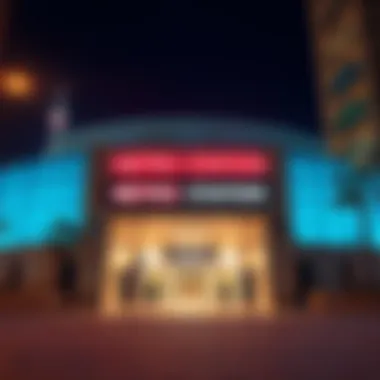
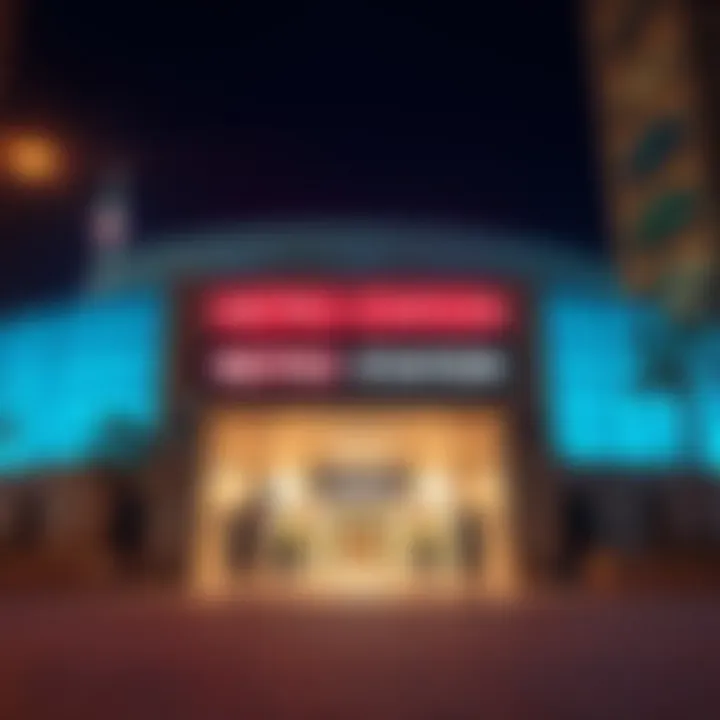
Such features make Stadium Station not just functional, but also a user-friendly environment for passengers with diverse needs.
Events and Attractions Nearby
Proximity to significant attractions is another feather in the cap for Stadium Station. The station’s close location to sports arenas boosts its relevance, particularly during major events. Nearby attractions include:
- Dubai Sports City: Hosting various sporting events, this complex has made the station popular among sports enthusiasts. Whether it’s football, cricket, or athletics, events draw large crowds, leading to increased foot traffic.
- Dubai International Stadium: Regular matches and concerts take place here, making it a hot spot for entertainment.
- Various Dining Options: Within walking distance, visitors can find an assortment of restaurants and cafes that cater to diverse tastes, ranging from local cuisine to international favorites.
These attractions not only promote the station’s importance as a transport hub but also enhance its role in the cultural landscape of the city.
Impact on Local Real Estate
The development of Stadium Station has notably influenced the surrounding real estate market. As more people recognize the convenience of living near metro stations, property values in the vicinity are likely to appreciate. Key points of consideration include:
- Increased Demand: Real estate near the station is increasingly sought after by investors and homebuyers, eager for the benefits of easy commuting.
- Transit-Oriented Developments (TOD): There’s a growing trend towards building residential and commercial units around transit hubs, promising potential for excellent returns on investment.
- Surrounding Infrastructure: The integration of the station into the metro network has prompted developers to elevate their projects, leading to upgraded infrastructures such as parks, shopping centers, and schools.
"The establishment of Stadium Station has redefined investment dynamics in the region. It is no longer just about living space; it’s about accessibility and lifestyle."
This ripple effect on real estate, spurred by improved connectivity, speaks volumes about the power of strategic transportation planning in shaping vibrant urban communities.
For further details on Dubai’s Metro System, visit Wikipedia. That way, you can dive into topics surrounding transport-oriented advancements that impact real estate trends.
Travel Tips for Commuters
Commuting through the Dubai Metro from Burjuman to Stadium isn’t just about hopping on and off a train. It requires an awareness of the system's nuances, which can enhance your travel experience. By diving into practical tips, commuters can save time, navigate challenges, and take full advantage of the metro's offerings. This section elaborates on essential travel advice that not only smooths the journey but also enriches understanding as to how this metro line intertwines with the city’s dynamics.
Navigating the Metro System
Dubai Metro is a well-structured system, yet it can seem overwhelming at first. Here are some straightforward tips to ensure a seamless trip:
- Familiarize Yourself with the Map: Before stepping out, take a moment to study the metro map. Knowing the names of the stations can make a difference, especially when requesting directions. You can view the map online at Dubai Metro Map.
- Use the RTA Smart App: Downloading this app can provide real-time updates on train schedules, station alerts, and fare calculations. It’s a handy tool and saves one from standing around wondering when the next train will arrive.
- Timing is Key: Travel during non-peak hours if possible. Morning and evening rush hours can turn your commute into a sardine can scenario. Aim for off-peak times to enjoy a less crowded ride.
- Be Mindful of Station Announcements: Listen for announcements inside the train, especially when approaching stations. This helps in preparing to disembark without the last-minute hustle.
Safety and Security Precautions
Safety is paramount in any public transport system, and Dubai Metro is no different. Commuters should take the following precautions:
- Stay Aware of Your Surroundings: While the metro is generally safe, keeping an eye on your belongings and being mindful of surrounding passengers can help prevent theft or uncomfortable situations.
- Use Designated Waiting Areas: When waiting for your train at the station, stick to the designated areas. This not only enhances safety but makes the boarding process more orderly.
- Follow Emergency Protocols: Familiarizing yourself with emergency exits and procedures at each station can be beneficial. While rare, knowing these details can be crucial during unexpected situations.
"Being prepared and aware can transform your travel experience from a mundane commute into a smooth and enjoyable journey."
Accessibility for All
Ensuring that everyone can navigate the metro system is a significant consideration. Here's how the Dubai Metro addresses accessibility:
- Facilities for Persons with Disabilities: Rather thoughtful, the metro has provisions like elevators, ramps, and designated seating. Commuters should look for these facilities when planning their journey.
- Signage and Announcements: Clear signage in multiple languages helps individuals whom English isn’t their first language understand the system better. Additionally, audio announcements guide those with visual impairments.
- Travel Assistance Programs: The RTA offers support for anyone needing additional help. Whether it’s assistance at stations or via customer service channels, resources are there to aid those with specific needs.
The Economic Implications of the Metro Link
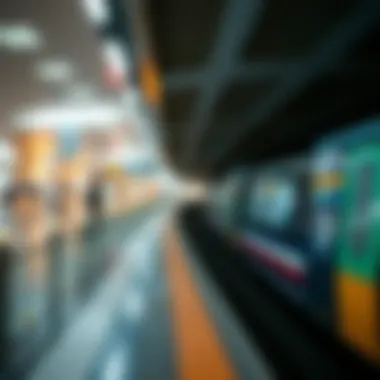
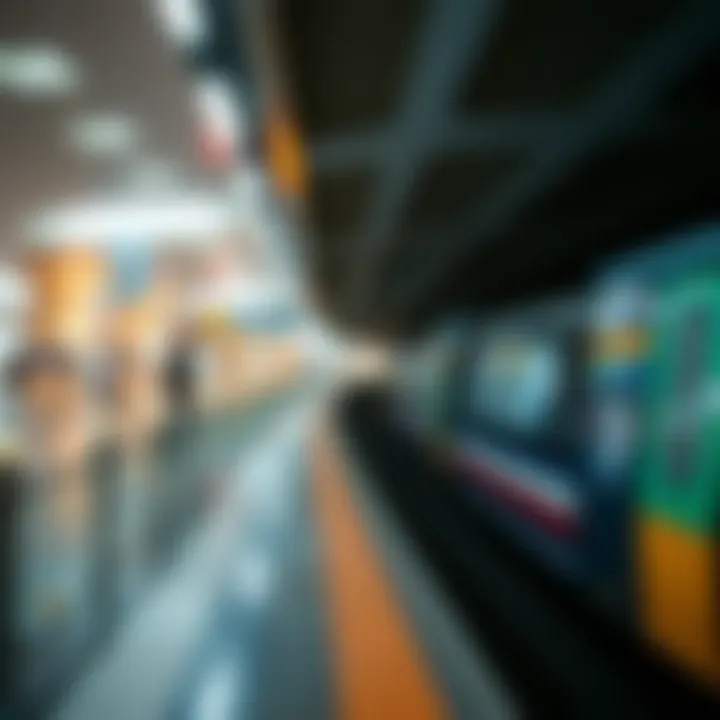
The link between BurJuman and Stadium Metro stations is more than just a transportation route; it serves as a significant catalyst for the economic landscape of Dubai. Efficient public transport can be a game-changer in urban environments, impacting everything from property values to investment opportunities. With the burgeoning need for accessible transit solutions in bustling cities, understanding these implications is crucial for investors, homeowners, and developers.
Enhancing Property Values
The proximity of Metro stations, like BurJuman and Stadium, inherently boosts property values in their vicinity. Properties located within walking distance to transit hubs tend to become highly sought after as they offer easy access for residents and businesses alike. Potential buyers often look for convenience, and the Metro provides that in spades. Imagine living in a place where a quick train ride can whisk you away to downtown or leisure hubs like the Dubai Sports City.
- Substantial Premium: Studies suggest properties near Metro stations can command a substantial price premium. In some cases, this can be upwards of 10 to 15 percent compared to similar properties further away.
- Urban Development: Increased real estate activity invites urban development. New housing projects, retail spaces, and offices are likely to emerge, further enhancing the desirability of these districts.
- Long-Term Growth: As Dubai continues to grow, areas surrounding new metro links are lagging no more. The economic pulse is felt more acutely as businesses thrive thanks to increased foot traffic.
It’s clear that the economic benefits triggered by the Metro’s reach extend beyond mere convenience; they shape a more vibrant, bustling urban life.
Investment Opportunities in Transit-Oriented Developments
The Metro line connecting BurJuman and Stadium paves the way for remarkable investment opportunities, particularly in transit-oriented developments (TODs). These areas are designed to maximize access to public transport while promoting a mixed-use environment, which can significantly enhance returns on investment.
- Appealing to Diverse Investors: TODs attract a diverse range of investors including real estate developers, businesses, and even financial institutions looking for steady revenue streams in commercial spaces.
- Sustainability and Planning: The focus on sustainable urban planning means that developments near the Metro can also benefit from government incentives. Over time, these initiatives enhance property attractiveness and viability.
- Enhanced Livability: Projects that incorporate parks, shops, and community services within walking distance of transit hubs promote a better quality of life. As lifestyle-oriented investments soar, they draw in residents and students, encouraging robust rental markets.
As the saying goes, "location, location, location" holds true. The proximity to Metro stations transforms that phrase into a powerful truth in property investment.
For additional insights about urban development and investments related to public transport, visit resources like Wikipedia and Britannica.
Future Developments and Expansion Plans
The importance of future developments and expansion plans in Dubai's metro system cannot be overstated, especially in the context of the BurJuman to Stadium link. This segment of the metro is more than just a transit route; it represents a lifeline within the city's evolving urban landscape. As traffic congestion increases and urbanization continues, efficient public transport becomes essential. Future developments in this area aim to further enhance connectivity, thereby making daily commutes smoother and more appealing.
Upcoming Metro Lines
Anticipated expansions in Dubai's metro lines promise to transform the way people navigate the city. With plans for new metro lines that will connect several key districts, the metro network's scope will enlarge significantly. For instance, the proposed Blue Line extension aims to link areas that currently lack direct metro access, creating a seamless flow for commuters.
Benefits of these upcoming metro lines include:
- Increased connectivity: More lines mean greater ease of movement across neighborhoods, promoting deeper integration within the city.
- Reduced traffic: With more reliable and efficient public transport, the number of cars on the road could decrease, easing traffic jams.
- Economic growth: Enhanced transport options attract businesses and investments, leading to job creation and improved property values.
Infrastructure Projects Impacting the Area
Infrastructure projects that are set to accompany the metro expansions are equally significant. New roads, pedestrian pathways, and bike lanes are part of a comprehensive approach to urban mobility that enhances the overall travel experience. These projects not only improve accessibility to metro stations but also encourage multi-modal transport usage, melding various transit methods into a cohesive system that benefits residents and visitors alike.
Key considerations regarding these developments include:
- Environmental sustainability: With the goal of reducing carbon footprints, upcoming infrastructure projects will incorporate green technologies and materials, promoting eco-friendly practices.
- Community engagement: Inviting input from local residents and stakeholders ensures that the developments meet the needs of the people who rely on them.
- Safety and convenience: Plans also emphasize the need for safer crossings and well-lit areas surrounding stations, enhancing the usability of the metro system.
Finale
In summing up the journey from Burjuman to Stadium Station, the significance of this Metro link resonates throughout Dubai's expansive urban fabric. It's not merely about commuting from point A to point B; it's a lifeline that ties various communities and economic zones together. As we assess the implications of this route, a few key considerations emerge clearly.
Summarizing Key Observations
Firstly, the travel experience from Burjuman to Stadium is characterised by its efficiency and accessibility. Trains run with commendable frequency, and the ride itself is seamless, allowing commuters to navigate the city with ease. Passengers can expect a travel time that balances expedience and comfort, enhancing their daily routine significantly. Moreover, the proximity of Stadium Station to various attractions, such as the historic cricket grounds and sports venues, showcases its central role in connecting residents and visitors alike.
Secondly, the synergy between Metro accessibility and local real estate developments cannot be overstated. The surge in property valuations near both stations is a clear indication of the investment potential that exists. Homebuyers, investors, and developers frequently express an eye on these areas, anticipating that enhanced connectivity will translate into vibrant communities and opportunities.
The Importance of Connectivity in Urban Development
Ultimately, the link between Burjuman and Stadium stations serves as a model for future developments in expanding urban transport networks. Connectivity fosters economic growth by enabling easier access to jobs, services, and recreational facilities. This arises from the understanding that an efficient transport system promotes higher urban density and allows for better utilization of land. Urban planners are increasingly prioritizing these kinds of links to ensure cities are livable, sustainable, and vibrant.
As one considers further advancements in Dubai's Metro system, the lessons learned from the Burjuman to Stadium corridor highlight the potential for similar initiatives in other parts of the city. The emphasis on connectivity isn’t just a buzzword; it is a strategic pillar for urban improvement and sustainable growth, which all stakeholders—from government bodies to private investors—must heed in planning for the future. The closing thought encapsulates this notion: seamless transport infrastructure is not merely a convenience; it is essential for fostering economic prosperity and enhancing the quality of urban life.





